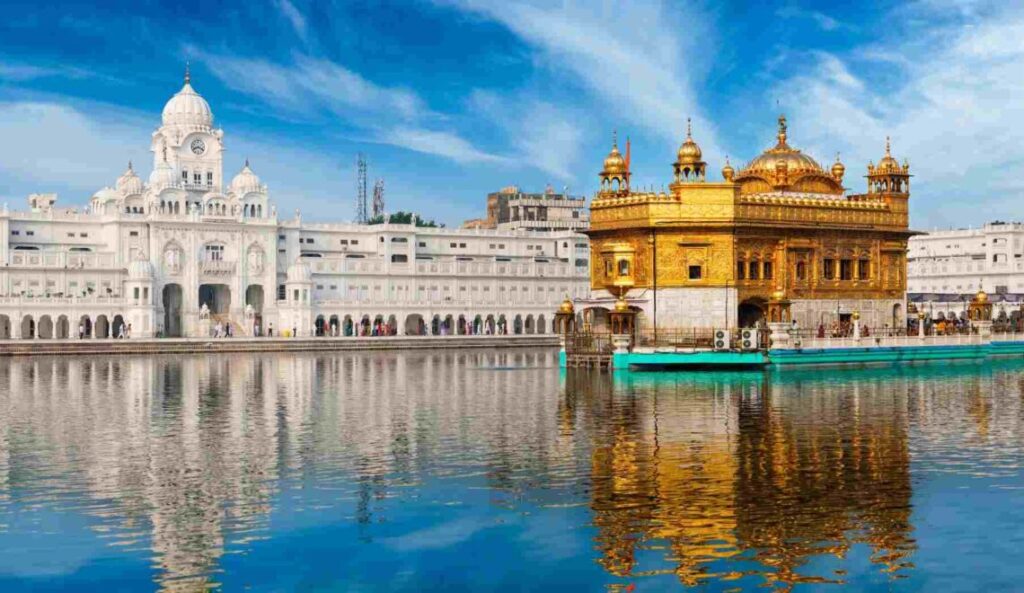“Pride and Heritage: Exploring the Timeless Monuments in Punjab That Echo Centuries of History” invites us on an enchanting journey through the cultural tapestry of Punjab.
In this region, history is etched into the stones that stand tall against the test of time. The monuments in Punjab are not merely structures; they are living chapters that narrate tales of courage, spirituality, and artistic brilliance.
From the sacred sanctums of the Golden Temple to the regal opulence of Qila Mubarak, each monument encapsulates the essence of Punjab’s rich heritage. This exploration delves into the profound significance of these architectural marvels, uncovering the stories embedded in their walls and the cultural legacy they proudly preserve.
As we embark on this odyssey, we will witness the breathtaking beauty of the Nehru Rose Garden, where vibrant hues and fragrant blooms symbolise the blossoming cultural richness of the region.
The journey continues to the Devi Talab Mandir in Jalandhar, a spiritual haven that echoes with the divine whispers of devotion. Ropar Archaeological Museum emerges as a time capsule, unravelling the mysteries of Punjab’s ancient civilizations. Sarai Amanat Khan in Amritsar unveils the grandeur of Mughal architecture, narrating tales of cultural crossroads.
1. Golden Temple (Harmandir Sahib)

The Golden Temple, also known as Harmandir Sahib is one of the religious monuments in punjab epitomises spiritual magnificence in Punjab. Nestled in the heart of Amritsar, this sacred pilgrimage site is not only a sanctuary for Sikhs but a symbol of unity and peace for people worldwide.
Adorned with a shimmering golden facade, the architecture of the Golden Temple is a harmonious blend of Hindu and Islamic styles, reflecting the inclusivity of Sikhism. The serene Amrit Sarovar, the holy tank surrounding the temple, adds to the tranquillity of the place.
Pilgrims and visitors alike are drawn to the glorious sanctum, where the Guru Granth Sahib, the holy scripture of Sikhism, is enshrined. The ethereal beauty of the Golden Temple, especially when illuminated at night, creates an awe-inspiring atmosphere that transcends religious boundaries, making it a must-visit monument in Punjab.
2. Jallianwala Bagh

Jallianwala Bagh, located in the heart of Amritsar, holds a sad place in India’s struggle for independence. This public garden, with its sprawling greenery and serene ambiance, bears witness to a tragic chapter in 1919 when British forces mercilessly opened fire on a peaceful gathering, leading to the loss of hundreds of innocent lives.
The memorial within the park, with its eternal flame and bullet marks on the walls, stands as a poignant reminder of the sacrifices made during the Jallianwala Bagh massacre.
Visitors can walk through the narrow entrance, experiencing a palpable sense of history and paying homage to the martyrs who played a pivotal role in India’s fight for freedom. Jallianwala Bagh remains a symbol of resilience and the indomitable spirit of those who sought justice and freedom, making it a revered monuments in Punjab.
3. Wagah Border
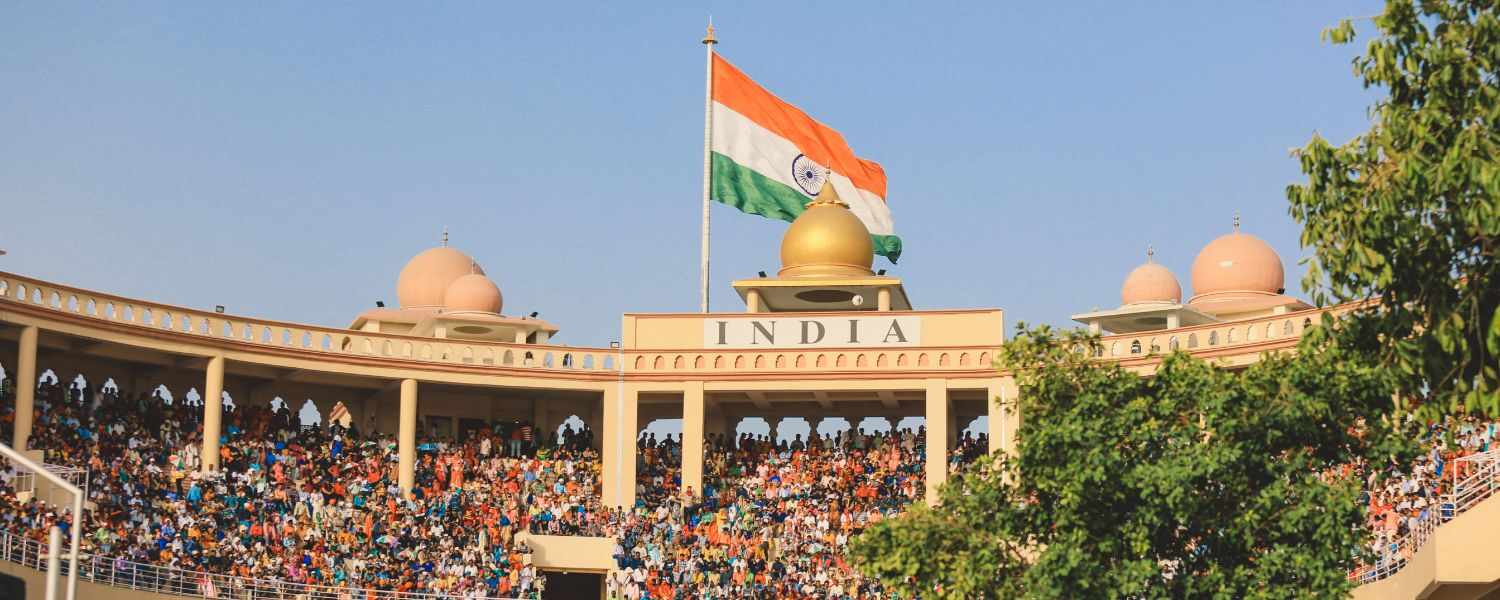
Wagah Border, where India and Pakistan come face to face, is not merely a geographical boundary but a theatrical spectacle that unfolds daily. Located near Amritsar, this border crossing witnesses a ceremonial retreat every evening, known as the Wagah Border Ceremony.
The event is a grand display of military pageantry, patriotic fervour, and symbolic gestures between the two nations. The booming shouts of the Border Security Force (BSF) personnel, the precision of flag lowering, and the electrifying atmosphere create an unforgettable experience for spectators.
The Wagah Border Ceremony celebrates national pride and is a testament to the enduring spirit of the people on both sides. Beyond the political divide, these Monuments in Punjab highlight the shared history, culture, and humanity that bind the people of India and Pakistan.
Wagah Border, with its vibrant energy and symbolic significance, stands as a unique and unmissable monument in Punjab, symbolising the unity and diversity of the Indian subcontinent.
4. Qila Mubarak

This fortified palace, steeped in history, is a captivating blend of Rajasthani and Mughal architectural styles. Qila Mubarak has witnessed the ebb and flow of centuries, serving as a silent witness to the cultural amalgamation that defines Punjab.
Its imposing structure echoes the grandeur of an era, drawing visitors into a world where every nook and cranny tells a story. As sunlight filters through intricately carved windows and dances on the stone walls, the palace reveals the artistic brilliance of its builders.
Qila Mubarak is not merely a structure but a living chronicle of Punjab’s past, inviting enthusiasts and historians alike to explore the corridors of time.
5. Ranjit Singh Museum
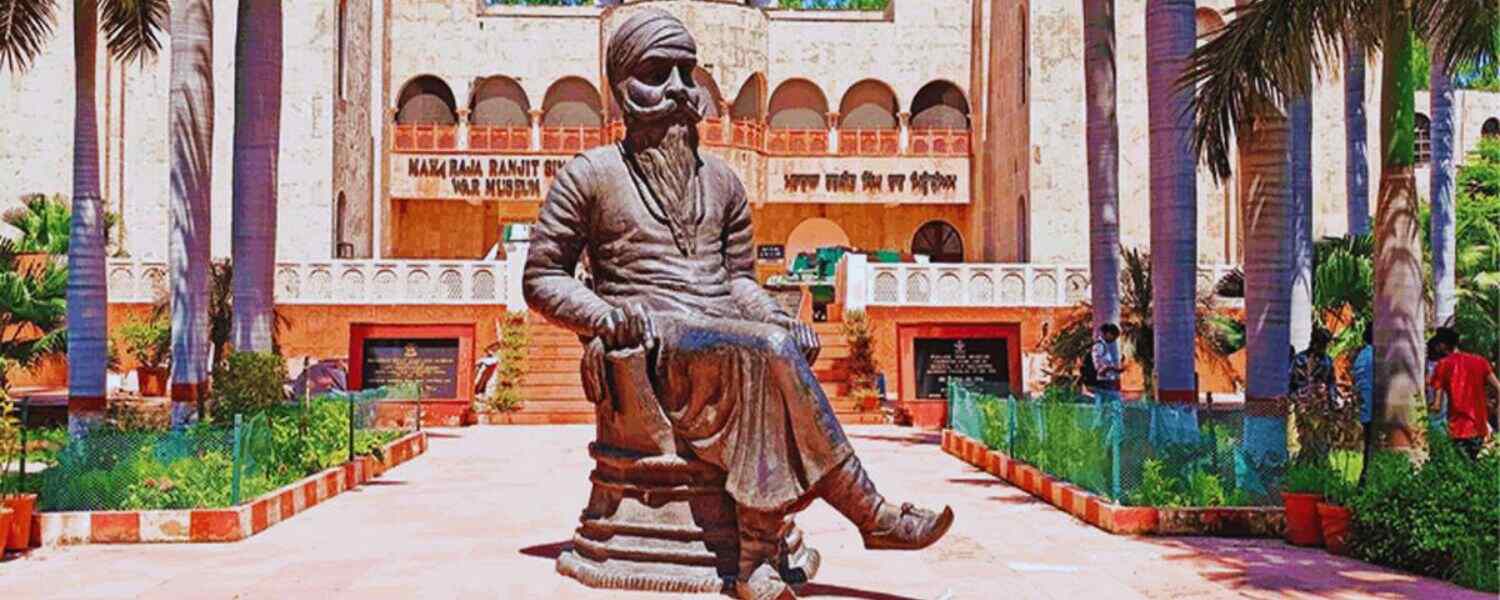
Amritsar, the spiritual heart of Punjab, houses a treasure trove of history in the form of the Ranjit Singh Museum. Dedicated to Maharaja Ranjit Singh, fondly known as the Lion of Punjab, this museum is a captivating journey through the life and times of a legendary leader.
The exhibits within these walls transcend mere artefacts and windows into an era marked by courage, diplomacy, and cultural resurgence. The museum meticulously preserves and showcases artefacts, weaponry, attire, and paintings from the illustrious reign of Maharaja Ranjit Singh.
Each display narrates a chapter of Punjab’s history, depicting a kingdom’s resilience and grandeur under a visionary ruler’s leadership. The Ranjit Singh Museum is more than a repository of antiquities; it is a homage to a ruler whose legacy continues to resonate in the spirit of Punjab.
6. Fateh Burj
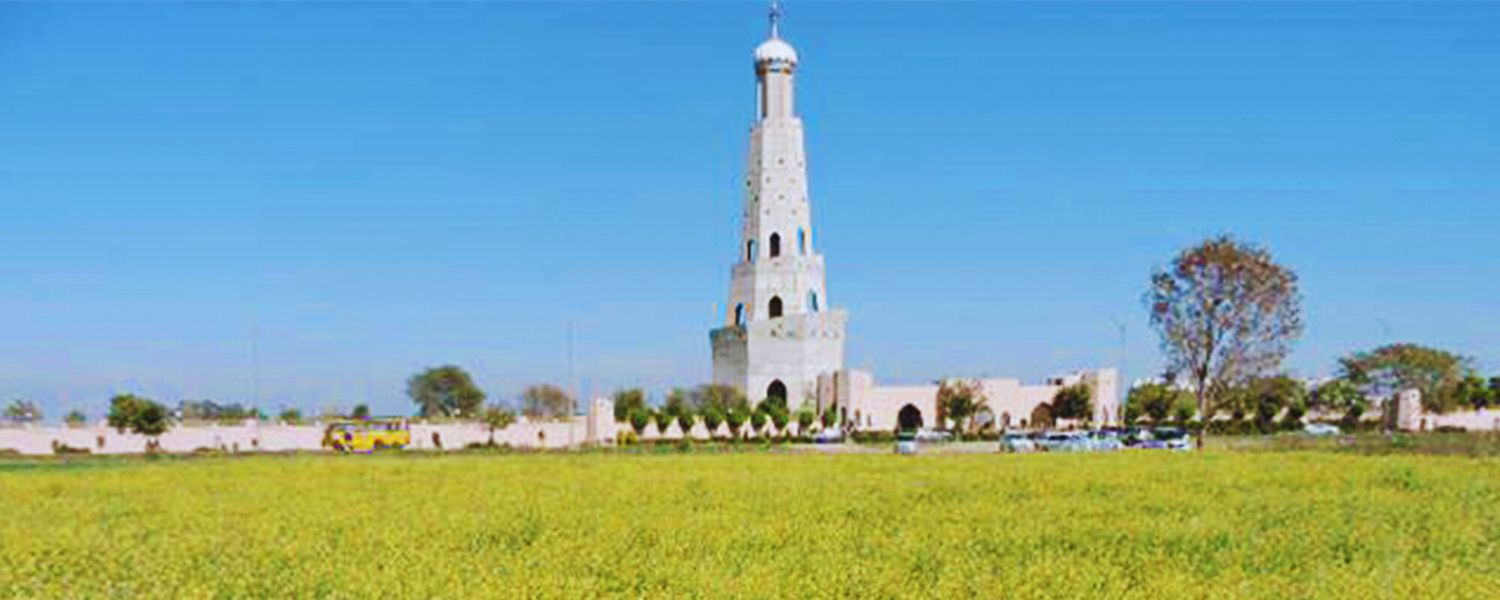
As the sun sets over Mohali, the silhouette of Fateh Burj stands tall, symbolising Punjab’s indomitable spirit and triumphs. This towering monument is one of the Monuments in Punjab, the tallest victory tower in India, and is a beacon of pride for the Sikh community.
Fateh Burj, translating to “Victory Tower,” commemorates the historic and courageous conquests of the Sikhs. Its height is not just a physical measure but a representation of the soaring aspirations and resilience of the people it honours.
From the top, the panoramic view of the surrounding landscape unfolds like a canvas, telling the story of Punjab’s triumphs and the undying spirit that defines its people. Fateh Burj is more than an architectural marvel; it is a testament to Punjab’s legacy of victory and the unwavering determination that continues to shape its future.
7. Sheesh Mahal
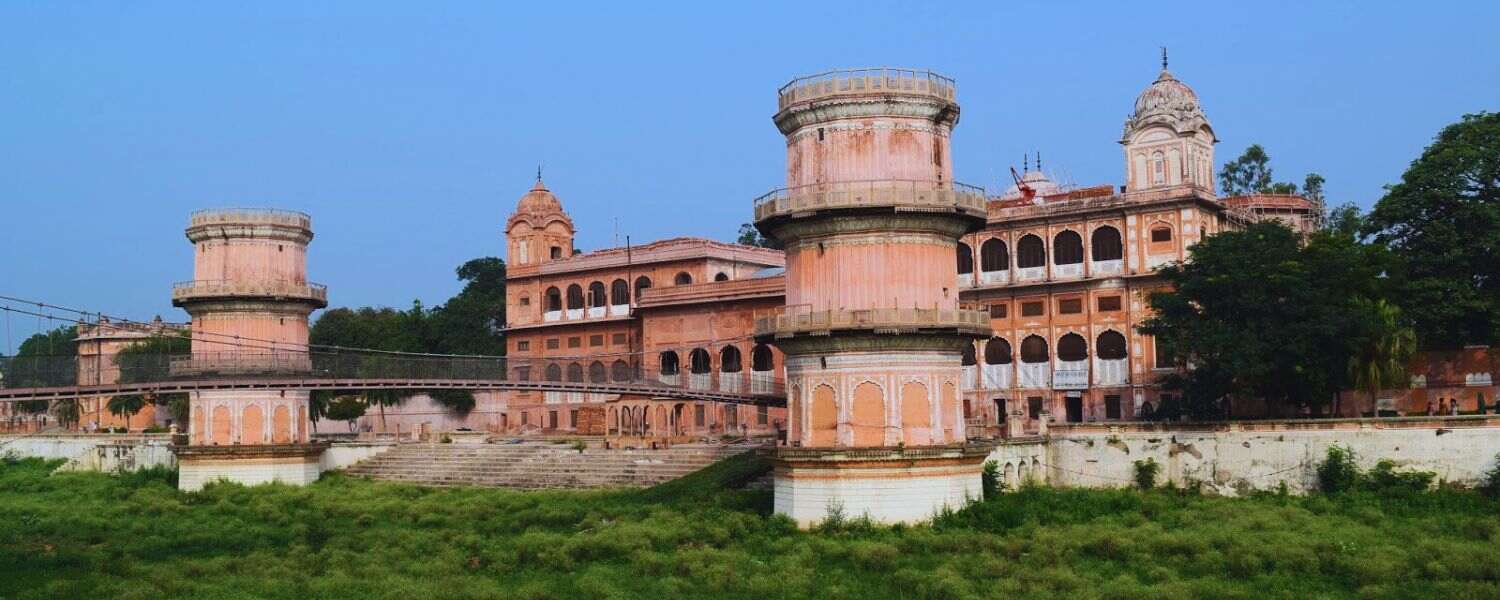
In the heart of Patiala, the Sheesh Mahal stands as a shimmering testament to the luxury and artistic finesse of the Patiala royal family. Translating to the “Palace of Mirrors,” this architectural gem is adorned with exquisite mirror work, reflecting the aesthetic taste of its regal patrons.
Each facet of the Sheesh Mahal tells a story of luxury and refinement, with its mirrored walls and ceilings creating an enchanting play of light. Visitors wander through the palace chambers and are transported to a world where craftsmanship and grandeur intertwine seamlessly this makes it one of popular Monuments in Punjab.
The Sheesh Mahal remains a beacon of Patiala’s cultural heritage, inviting all to witness the splendour of its mirrored elegance.
8. Anandpur Sahib

Anandpur Sahib, nestled in the picturesque foothills of Punjab, emerges as a spiritual haven and a significant Sikh pilgrimage site. Revered for its historical and religious significance, the city is home to the Kesgarh Sahib Gurdwara, a sanctum associated with Guru Gobind Singh, the tenth Sikh Guru.
Pilgrims and history enthusiasts flock to Anandpur Sahib to soak in the divine atmosphere and explore the religious and cultural heritage embedded in its sacred sites. The city resonates with the spirit of Sikhism, making it a soul-stirring destination that encapsulates the essence of Punjab’s spiritual tapestry.
Apart from this, you can also explore the beautiful cities of Punjab here.
9. Maharaja Ranjit Singh Statue
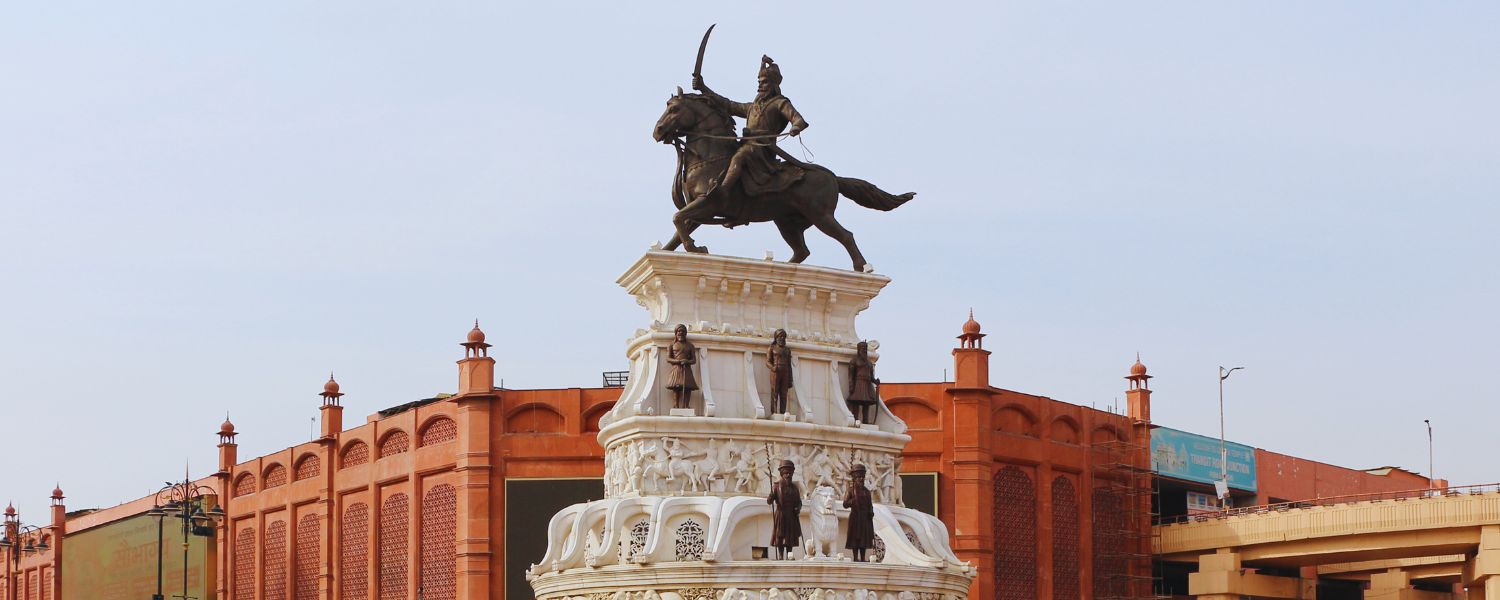
Amritsar, the cultural and spiritual heart of Punjab, pays tribute to its iconic leader, Maharaja Ranjit Singh, through a colossal statue that stands tall amidst the historic Rambagh Gardens.
This monumental depiction captures the essence of the “Lion of Punjab,” commemorating the courage and leadership of Maharaja Ranjit Singh.
Set against the backdrop of lush gardens and surrounded by a tranquil ambiance, the statue invites visitors to reflect on the legacy of this legendary figure in Sikh history. The Maharaja Ranjit Singh Statue is more than a physical representation; it symbolises pride, resilience, and the enduring spirit of Punjab.
10. Nehru Rose Garden

Nehru Rose Garden is a vibrant testament to the beauty that blooms in the cultural landscape of Punjab. Spread across acres of land, it proudly holds the title of Asia’s largest rose garden. Bursting with a kaleidoscope of colours and fragrances, the garden boasts a mesmerising array of roses, showcasing over 1,600 varieties.
Named in honour of India’s first Prime Minister, Jawaharlal Nehru, this verdant haven provides a serene escape for locals and visitors alike. Beyond its captivating floral display, the garden hosts various cultural events and competitions, vibrating its enchanting ambiance. Nehru Rose Garden, a symbol of natural beauty and cultural celebration, is integral to Punjab’s rich heritage.
11. Devi Talab Mandir, Jalandhar

Jalandhar, a city steeped in history, harbours the Devi Talab Mandir, a sacred Hindu temple that is a testament to the region’s spiritual roots. Dedicated to Goddess Durga, this ancient temple is a revered pilgrimage site, drawing devotees from far and wide.
The temple’s sanctum houses an idol of the goddess adorned with intricate embellishments, creating an aura of divine grace. The sacred pond is a distinctive feature of the temple, where devotees often engage in ritualistic ceremonies.
The Devi Talab Mandir is not merely a religious tower; it is a cultural cornerstone, reflecting the architectural and spiritual legacy of Punjab. Amidst the hustle and bustle of Jalandhar, this monument stands as a serene sanctuary for seekers of solace and spirituality.
12. Ropar Archaeological Museum

For those inclined towards unravelling the mysteries of Punjab’s ancient past, the Ropar Archaeological Museum beckons with its treasure trove of artefacts. Situated in Rupnagar, this museum is a gateway to the Harappan civilization, offering a glimpse into the region’s historical tapestry.
The exhibits, ranging from pottery and tools to sculptures and seals, weave together a narrative that transcends time. Visitors can explore the remnants of an era long gone, marvelling at the ingenuity of ancient civilizations that once thrived in this fertile land.
The Ropar Archaeological Museum stands as a bridge between the contemporary and the ancient, preserving the rich cultural heritage of Punjab for generations to come.
13. Sarai Amanat Khan, Amritsar

Amritsar, a city steeped in Sikh history, hosts the Sarai Amanat Khan, an architectural gem from the Mughal era. This historical sarai, built during the reign of Emperor Akbar, reflects the grandeur of Mughal architecture.
The intricate carvings and ornate detailing transport visitors to a bygone era, where the Sarai was a resting place for travellers and traders.
The samurai’s courtyard and chambers witness the passage of time, echoing tales of the Mughal era’s opulence. With its historical significance and architectural splendour, Sarai Amanat Khan stands as a silent sentinel to the crossroads of cultures and civilizations in the heart of Amritsar.
Conclusion
In concluding our exploration of these timeless monuments, it becomes evident that Punjab is a treasure trove of historical and cultural gems. Each monument serves as a silent guardian of the traditions, resilience, and artistic brilliance that define the spirit of Punjab.
As we wander through the corridors of history, we are reminded that these monuments are not frozen in time but continue to resonate with the present heartbeat. They beckon travellers, history enthusiasts, and curious minds to witness the grandeur of the past and appreciate the rich heritage that Punjab proudly upholds.
“Pride and Heritage” is not merely a title; it is an invitation to immerse oneself in the living history of Punjab, where every monument tells a story, and every story is a testament to the enduring legacy of a remarkable land.
